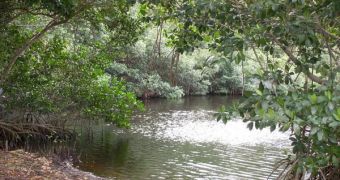The Florida Everglades, the largest wetland in the United States, pales in comparison to Brazil's Pantanal region, which is a bit larger than the United Kingdom, and houses thousands of endangered species, which have found in the area a home away from accelerated industrial and urban development. Now, humans have reached the borders of this land, and the damage they have been causing for the last few years is already beginning to take its toll on the animals. If measures are not taken soon, the entire area could succumb to iron and soy exploitations and to cattle farms.
As far as the environment goes, Brazil is one of the most important countries in the world, housing some of the largest rain forests, as well as some of the most complex ecosystems on the face of the Earth. It's also one of those nations where development keeps in mind no rules, and peasants and farmers simply cut everything down to make way for their constantly-expanding businesses. Increasing global demand for various products makes them oblivious to the damage they are willingly causing.
In fact, they even chase away authorities with firearms, when inspectors come to see the devastation in some of the country's poorest regions. Only recently, a mob assaulted a hotel where governmental agents were staying, and forced them out of their village, because the officials had found impressive quantities of chopped wood in several regions.
“It's a type of Noah's Ark but it risks running aground,” biologist Elder Brandao de Oliveira says of the Pantanal region. He adds that the area is home to impressive jaguars and endangered Hyacinth Macaws, as well as to 9-foot (3 meter)-long caymans, which live alongside giant otters. Tree branches are filled with an incredible variety of tropical birds, and the whole land is drenched in the waters of the upper Paraguay river, which represents the border between Brazil, Bolivia, and Paraguay.
On the other hand, farmers who have been destroying the landscape for generations say that this is already part of their livelihood, and that they cannot be expected to live at a moment's notice. Some even threat that they will defend their land with guns, even though it's not actually theirs. The only solution is for Brazilian authorities to take initiative and restore the area to its formal glory, while things can still be saved.

 14 DAY TRIAL //
14 DAY TRIAL //